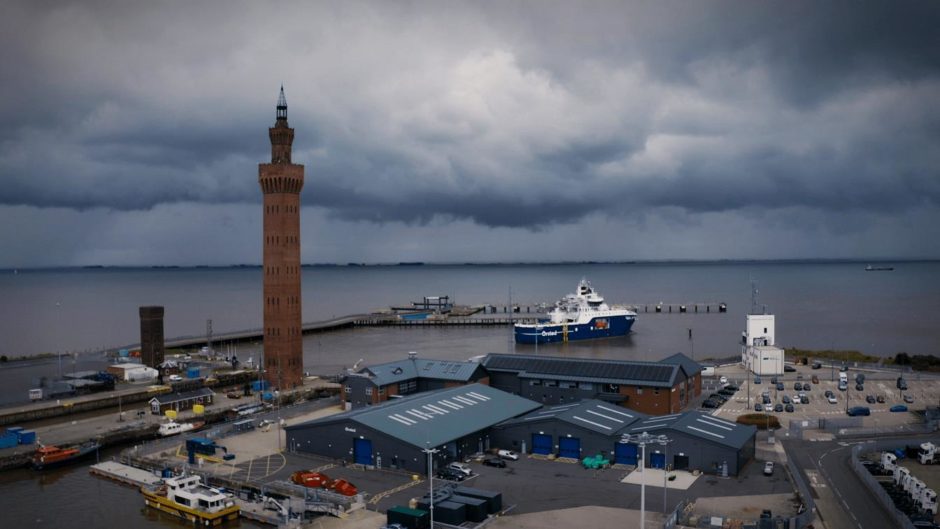
Grimsby has been chosen as the location for an innovative “marinised” electrolyser project for renewable hydrogen production.
The Fuel Cells and Hydrogen Joint Undertaking (FCH JU) funded OYSTER project will develop and demonstrate a system designed to be integrated with offshore wind turbines.
The project will also investigate the potential of using pipelines to transport hydrogen to shore.
Green or renewable hydrogen is rapidly emerging as a key tool in the energy transition.
It provides a clear decarbonisation path for many sectors that would otherwise be difficult to decarbonise, including heavy industry and transport.
Developing offshore hydrogen production – by utilising electrolysers which only require water and renewable electricity to generate the fuel – further increases this potential by providing a means of transporting low-cost renewable energy from areas of excellent resource to demand centres.
Reaching the EU Hydrogen Strategy target of 40GW of electrolysers by 2030 is expected to require both onshore and offshore electrolysers.
OYSTER – being undertaken by a consortium of ITM Power, Ørsted, Siemens Gamesa Renewable Energy, and Element Energy – will develop and test a megawatt-scale, fully marinised electrolyser in a shoreside pilot trial, located in Grimsby.
The project will also explore the feasibility and potential of combining an offshore wind turbine directly with an electrolyser and transporting renewable hydrogen to shore.
Funding for the project comes entirely from the FCH JU – a public private partnership of the European Commission – which awarded Oyster £4.3 million in January 2021.
Grimsby, North East Lincolnshire, was selected due to its strong connection to renewable energy, in particular offshore wind.
The English seaside town is home to the operations and maintenance hub for Ørsted’s UK East Coast operations, including Hornsea One and Hornsea Two.
Both offshore wind farms use Siemens Gamesa turbines and are fitted with blades manufactured in Hull.
The Humber is also home to Gigastack, which is developing a blueprint for the deployment of industrial-scale renewable hydrogen from offshore wind.
The project is led by a separate consortium, consisting of ITM Power, Ørsted, Element Energy and Phillips 66 Limited.
Duncan Clark, Ørsted’s UK boss, said: “The combination of offshore wind and renewable hydrogen production holds game-changing potential to decarbonise otherwise hard to abate sectors, and as the largest offshore wind company in the world, we are exploring offshore hydrogen production as a future, supplemental way of getting large amounts of renewable energy, generated from plentiful offshore wind, to where it is needed. Just as with scaling-up offshore wind, early lessons from projects like this can then be deployed across the region and around the world.”
Sheffield-based ITM Power is responsible for the development of the electrolyser system and the electrolyser trials, while Ørsted will lead the offshore deployment analysis and the feasibility study of future physical offshore electrolyser deployments.
The Danish renewables giant will also support ITM Power in the design of the electrolyser system for marinisation and testing.
Siemens Gamesa Renewable Energy and Element Energy are providing technical and project management expertise.
Dr Graham Cooley, chief executive of ITM Power, said: “Renewable hydrogen is the cleanest fuel available to us today. Utilising offshore wind energy, and generating renewable hydrogen using water in the process of electrolysis, offers a route to be able to decarbonise the entire energy system. ITM Power is delighted to be supporting this move towards a greener, cleaner future”
Michael Dolman, partner at Element Energy, said: “Since supporting the formation of the OYSTER project, we’ve seen a growing number of projects planning offshore hydrogen production and increasing interest in this area from a wide range of stakeholders. With the selection of a location for the demonstrator, OYSTER is progressing well and will play a valuable role in advancing electrolysis technology for offshore applications.”
Bart Biebuyck, executive director, FCH JU, said: “In order to meet the challenging EU Hydrogen Strategy target of 40GW renewables-fed electrolysers by 2030, off-shore wind parks will play an essential role. Depending on local conditions it may be optimal to move the electrolysers offshore and transport hydrogen rather than electricity to shore. The FCH JU is proud to support the OYSTER project as a stepping stone for off-shore electrolysers through the development of a fully “marinised” MW-scale electrolyser to be tested right next to the sea front and therefore contribute continuously to developing technologies for a climate-neutral future.”
Recommended for you

